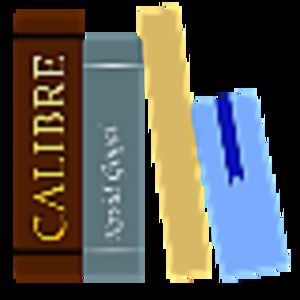If you used Calibre ePub reader and liked it, you will surely love this one as well. Sumatra PDF Reader has a lot in common with Calibre. But the former beats the latter in terms of performance and features. This ePub reader is one of the fastest ones you will find. Also, it has a tiny file size, which is just 5MB. Calibre: The one stop solution for all your e-book needs. Comprehensive e-book software. If you are using macOS older than 10.14 (Mojave), the last version of calibre that will work on your machine is 3.48, available here. If you are using macOS 10.8 (Mountain Lion), the last version of calibre that will work on your machine is 2.85.1, available here. Calibre can directly connect to all the major (and most of the minor) e-book reading devices, smartphones, tablets, etc. Simply plug your device into the computer with a USB cable, Calibre should automatically detect the device and then you can transfer books to it by clicking the Send to device button.
We use Calibre to help dedrm, convert and even manage our Kindle/Kobo/Google eBooks. But before we add them to Calibre library, where are eBooks downloaded and stored on our computer? And where are eBook files saved after I convert them with Calibre? Is it possible to change or export my library in Calibre? Here is a comprehensive guide and you will get the answers.
Calibre is a useful and powerful eBook Management System. Calibre has the ability to view, convert, edit, and catalog e-books of almost any e-book format. This open source ebook manager and e-reader solution give you a free access to read and manage your digital book collection with ease.
Note that:
Calibre supports many input formats, but here in this post what I introduce are Kindle, Kobo, Google and some library eBooks. Nook and Apple ePubs are excluded.Part 1. Where is the Calibre Library located?
The first time we run calibre, it will ask you for a folder in which to store your books. Whenever we add a book to calibre and convert formats, it will copy the book into that folder.
We can also click on “Path: Click to open” below the book, then open the calibre library.
As you see, there is a metadata.db file stored at the top level of the library folder. It’s a sqlite database.
And books in the folder are nicely arranged into subfolders by Author and Title.
Calibre Ebook Manager Plugins
Each book folder contains a cover image, metadata.opf, the original book file and others.
Is it possible to move our library to another location? Click on the library’s name(“Calibre Library” button at the top of the window) and select “Switch/create library…”.
On the next screen select the new path for our library and click the option to “Move current library to new location”.
Then, the library location will be changed in Calibre.
Important note:
2. The library folder and all its contents make up what is called a calibre library. If you want to back up your calibre library, copy the entire folder (Calibre Library) and all its subfolders.
3. We can also back-up our calibre library by “Export all calibre data”.
Calibre Ebook Manager
Part 2. How do I get Calibre to recognize my device?
Calibre can directly connect to all the major (and most of the minor) e-book reading devices, smartphones, tablets, etc.. Simply plug your device into the computer with a USB cable, Calibre should automatically detect the device and then you can transfer books to it by clicking the Send to device button.
Tips:
On macOS, if you get permission errors when connecting a device to calibre, you can fix that by checking under System Preferences > Security and Privacy > Privacy > Files and Folders.But for those downloaded books on our computers, we must know the downloaded location folder first. Here is the full list of Kindle/Kobo/Google books location on our windows/mac computers.

Calibre Ebook Manager Review
- (Kindle for PC AZW)C:UsersYOURUSERNAMEDocumentsMy Kindle Content
- (*Kindle for Mac AZW) /Users/Mac user name/Library/Application Support/Kindle/My Kindle Content
- (Kobo for PC KEPUB)C:UsersUSER NAMEAppDataLocalKoboKobo Desktop Editionkepub
- (Kobo for Mac KEPUB) UsersUSER NAMELibraryApplication SupportKoboKobo Desktop EditionKepub
- (Adobe Digital Editions on Win/Mac) UsersusernameDocumentsDigital Editions
Note:
If the Kindle for Mac app is downloaded from App store, the downloaded azw file location is here:/Users/Mac user name/Library/Containers/com.amazon.kindle/Data/Library/Application Support/Kindle/My Kindle Content
And after we have known the stored location of our Kindle/Kobo/Google eBooks, we could find our downloaded files easily and then add them to the Calibre library to manage them.
We can target the folder so that Calibre could help manage our files at once.
And then click on the “Connect/share” button and select “Connect to folder”.
Target and select folder, then you will see a “Device” button shown near the “Library” button. Click it (or select “Show books in the main memory of the device” from the dropdown list).
See? Calibre recognizes your downloaded eBooks and shows them in one place.

This method helps add books from one dedicated location folder with just 1-click. Calibre will treat this folder as a device, and after you target this, you can configure this device and edit eBooks’ metadata. Restart Calibre for the changes to Folder Device to be applied.
But if you want to convert eBooks formats, don’t add books by this method. Directly drag them or click on “Add books” button to import those downloaded eBooks from computer, please.
